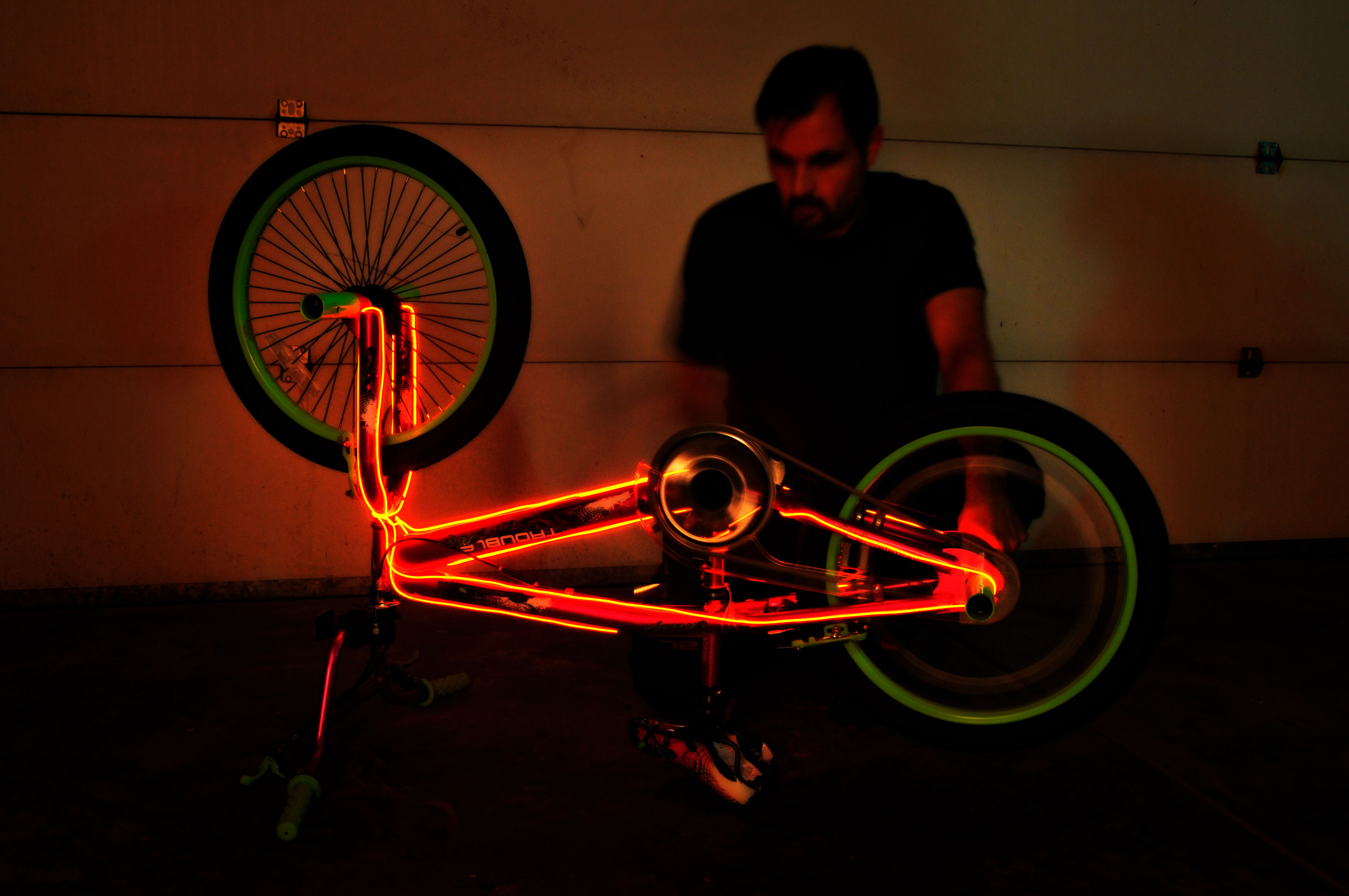If you’re thinking, “‘EL Cycle’ sounds like a bicycle-powered EL wire project,” then you are correct! In this project we’ll be using a stepper motor as a generator to drive EL wire wrapped around the frame of a bike.
Instead of powering the EL wire with batteries — which would eventually deplete — we’ll generate power from pedaling. This will give you continuous power while moving, as long as all the parts stay attached correctly to your bike frame. This continuous power is achieved with an inline skate wheel that rotates by rubbing up against the rim of your rear wheel. This in turn will rotate a bipolar stepper motor, which generates DC voltage that will be transformed into 100+VAC needed to illuminate two sections of EL wire. I’ve selected red for both EL wires, but you can mix-and-match.

The schematic is really quite simple, so let’s take a look at it:
If that looks complicated, it’s not. I’ll walk you through the steps below, but keep in mind you will likely need to make some adjustments based on your bicycle frame and design. For instance I chose a smaller BMX bike to attach everything to, but because of where the wheel-and-motor unit is mounted on the rear wheel, there is only about 1″ clearance between the back of a foot pedaling and these components. You can always change the design of how everything mounts to your bicycle — the schematic will remain the same.
For this build you’ll also require access to some basic workshop tools (or you could order everything laser-cut), basic soldering equipment, and standard hardware for fitting everything together.




